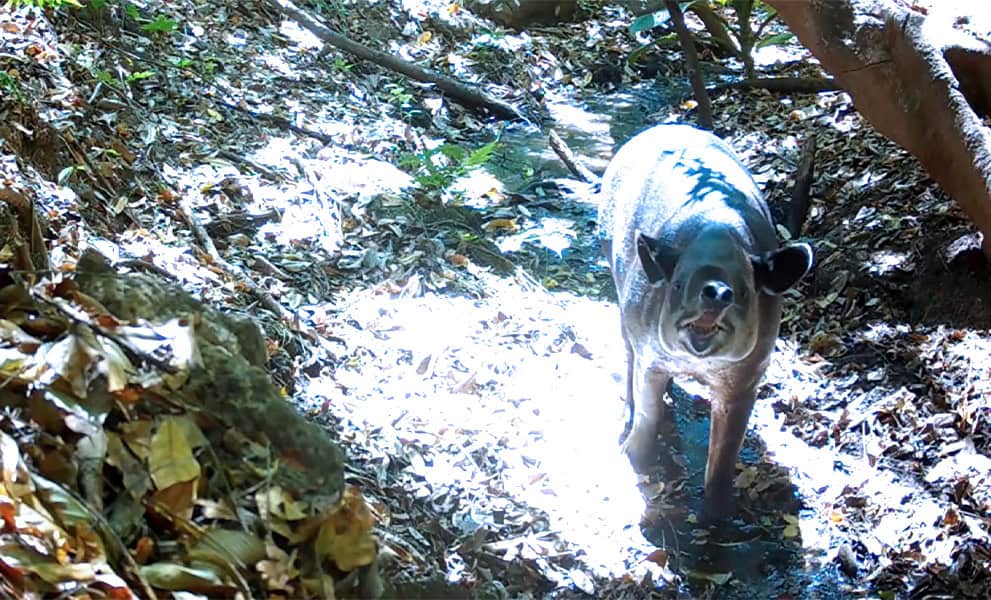My work with camera traps is a combination of science and art. Ecology is the study of the relationship between living organisms and their physical environment. An understanding of the species that I’m seeking out and how those species use their environment certainly has an effect on the success of a project. As for the art side of things, I go to a lot of trouble to try set my camera traps in a manner that will produce the most visually appealing wildlife video possible. So my goals are clear. I want to record as many as species as I can, and I want those videos to be spectacular.
In an effort to reach my goals, I only use cameras that can produce high quality videos. Though they do record audio, I honestly don’t give that aspect of the cameras much thought. Most videos record the background noise of the forest, wind rustling leaves, insects buzzing, and birds singing. I’m not even sure if most people have the volume on when they’re browsing my videos on social media. If they do, the background noise is a pleasant addition.
Most of the stars of my wildlife videos are purposefully silent. It doesn’t do a prey species much good if it’s walking around making a bunch of noise, announcing its presence to all of the hungry predators in earshot. Likewise, a predator isn’t likely to find much to eat if it’s doing a lot hooting and hollering. Birds are the most common exception to this rule with many species’ need to sing apparently outweighing the benefits of silence.
Every once in a while, I’m treated to a video of a normally reticent species making some sort of delightful noise. In the video below I’ve collected clips of four normally quiet animals that I captured making fantastic noises. Each video only lasts a few seconds, so sometimes it’s hard to determine the reason for their calls but there are often clues in the videos that are recorded just before or after.
The first clip is of a female puma (Puma concolor) absolutely screaming its head off. I don’t know what I expected a puma to sound like, but these screams weren’t it. This camera recorded this female walking through the forest with a large male in the days prior to this video, so my guess is she’s calling for him.
The second clip is of an American crocodile (Crocodylus acutus) making the scariest dinosaur-grunts that you’ve ever heard in your entire life. This video was recorded at the mouth of a crocodile cave that I accidentally discovered in Guanacaste. I believe it shows the interaction between a male and female crocodile. Are they in love? Are they about to kill each other? Who knows, but I love the sounds.
The next clip is significantly less frightening than the previous two. It features a female ocelot (Leopardus pardalis) making the exact noise you’d expect for a cat, meowing. She is alone in this video, but videos recorded in the days before and after showed her walking around with a large juvenile. I assume she’s calling to her offspring.
The final clip is of a Baird’s tapir (Tapirus bairdii) making a sound that can best be described as soft squeals that sound as though they’re coming through a wrapping paper tube. It’s the exact sound that you’d guess would emanate from the tapir’s elongated snout. If you listen closely to the video, you can hear the crunching steps of another tapir, out of frame, that this individual is talking to.
About the Author
Vincent Losasso, founder of Guanacaste Wildlife Monitoring, is a biologist who works with camera traps throughout Costa Rica. Learn more about his projects on facebook or instagram. You can also email him at: vincent@guanacastewildlifemonitoring.com






